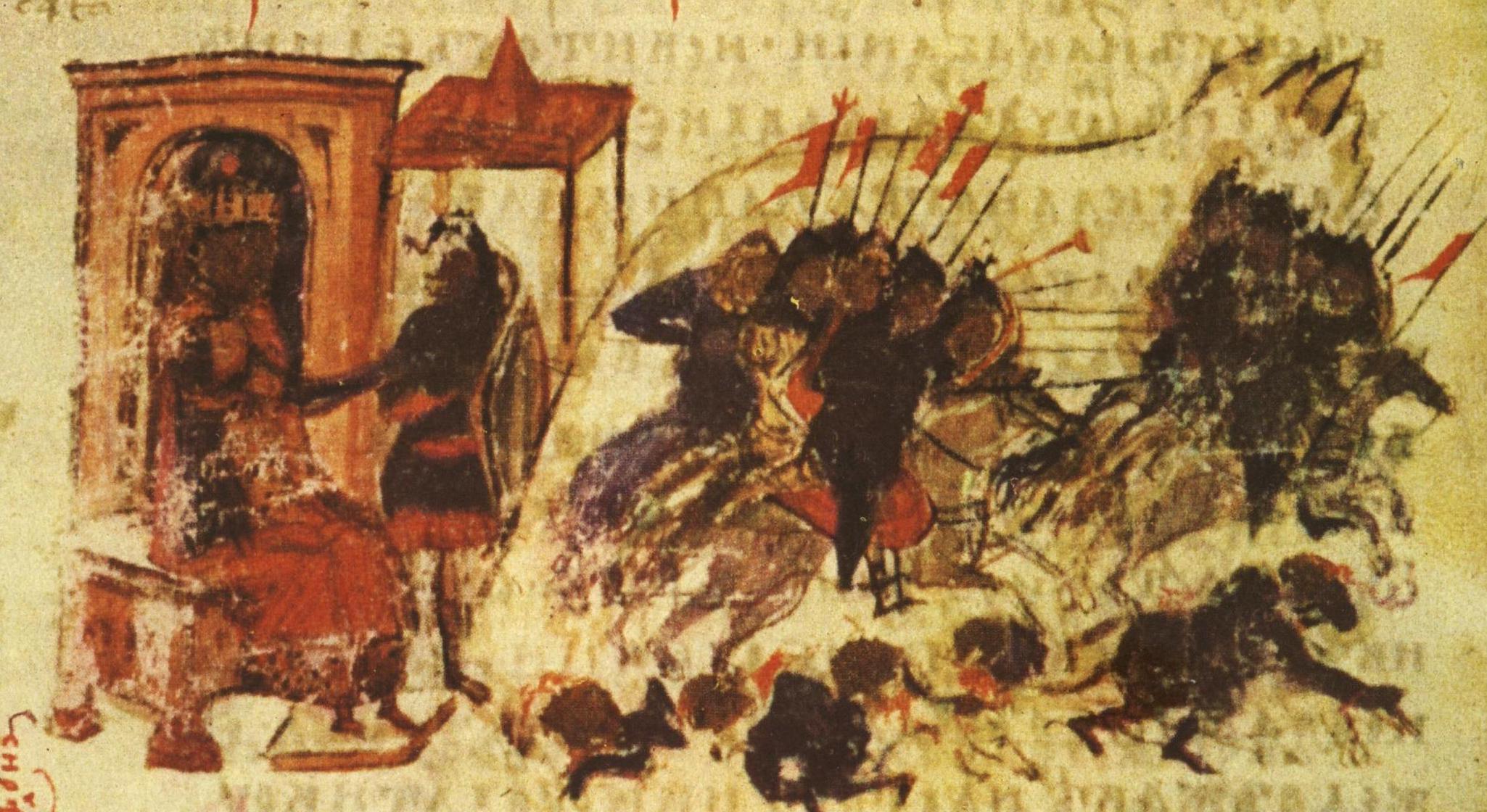The Arabs had overrun a vast collection of diverse peoples with diverse customs. Moreover, internal dissensions among the Arabs themselves prevented the establishment of a permanent unified state to govern the whole of the conquered territory. After Muhammad’s death, there was disagreement over the succession. Finally, Muhammad’s eldest companion, Abu Bekr, was chosen khalifa (caliph, the representative of Muhammad). Abu Bekr died in 634, and the next two caliphs, Omar (r. 634-644) and Othman (r. 644-656), were also chosen from outside Muhammad’s family.
Many Arabs resented the caliphs’ assertion of authority over them and longed for their old freedom as nomads. In 656 Othman was murdered. By then those who favored choosing only a member of Muhammad’s own family had grouped themselves around Ali, an early convert and cousin of the Prophet. This party also opposed all reliance on commentaries, or supplemental works, explaining the Koran. Fundamentalists with regard to the holy teachings, they became known as Shiites (the sectarians). Opposed to them was a prominent family, the Umayyads, who backed one of their members, Muawiyah, as caliph.
In 656 All was chosen caliph, and civil war broke out. Ali was murdered in 661. His opponent, Muawiyah, had already proclaimed himself caliph in Damascus in 660. Thus began the dynastic Umayyad caliphate (661-750). On the whole, it saw ninety years of prosperity, good government, brisk trade, and cultural achievement along Byzantine lines. The civil service was run by Greeks, and Greek artists worked for the caliph; the Christian population, except for the payment of a head tax, were on the whole unmolested and better off than they had been before.
Shi’ite opposition to the Umayyads, however, remained strong. The enemies of the Shi’ites called themselves Sunnites (traditionalists). There was little difference between the two groups with regard to religious observances and law, but the Shi’ites felt it their duty to curse the first three caliphs who had ruled before Ali, while the Sunnites deeply revered these three caliphs. The Shi’ites were far more intolerant of the unbeliever, conspired against the government, and celebrated the martyrdom of Ali’s son Hussein, who was killed in battle in 680 as the result of treachery.
In 750 the Shiltes were responsible for the overthrow and murder of the last of the Umayyad caliphs at Damascus, together with ninety members of his family. The leader of the conspirators was Abu’l Abbas—not a Shi’ite himself, but the great-grandson of a cousin of Muhammad. The caliphate was shortly afterward moved east to Baghdad, capital of present-day Iraq and close to the former capital of the Persian Empire, and was thereafter known as the Abbasid caliphate. The days when Islam was primarily an Arab movement under Byzantine influence were over.
Other groups appeared in Islam with varying views of how to interpret the Koran. Some were Sufis who attempted to lose themselves in divine love and whose name was given them from suf, wool, for the undyed wool garment they wore. Politically the rest of the Muslim world fell away from its dependence upon the Abbasids. One of the few Umayyads to escape death in 750, Abd ar-Rahman made his way to Spain and built himself a state centered in the city of Cordova. Rich and strong, his descendants declared themselves caliphs in 929.
Separate Muslim states appeared in Morocco, Tunis, and Egypt, where still another dynasty, this time Shi’ite, built Cairo in the tenth century and began to call themselves caliphs, though they were soon displaced by Sunnites. Rival dynasties also appeared in Persia, in Syria, and in the other Eastern provinces. At Baghdad, though the state took much of its character and culture from its Persian past, power fell gradually into the hands of Turkish troops. Although the caliphate at Baghdad lasted until 1258, during its last two centuries the caliphs were puppets in Turkish hands.

